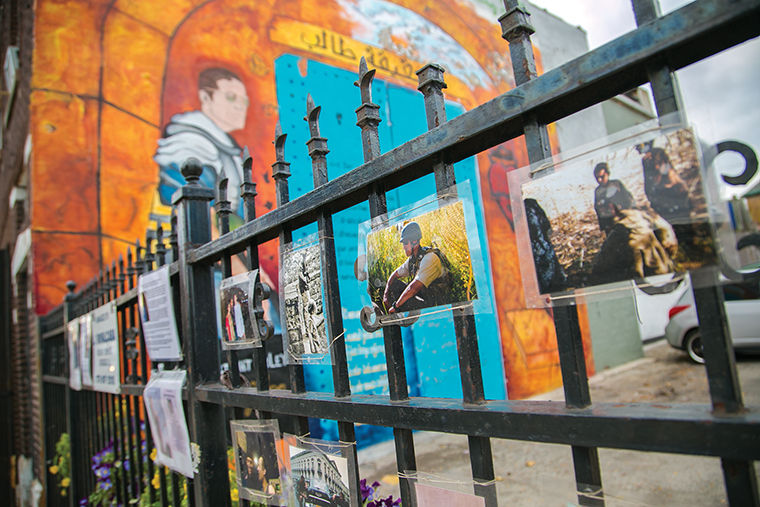New Pilsen mural honors James Foley
A new mural on the side of Pilsen’s Vintage & Thrift Store, 1430 W. 18th St., honors the late journalist James Foley. Friends of Foley came up with the idea as a tribute to him.
November 3, 2014
Friends and family of murdered American journalist James Foley are commemorating his life with a mural on the side of Pilsen’s Vintage & Thrift Store, 1430 W. 18th St.
Foley, a freelance war correspondent, traveled to Syria to cover the country’s civil war. He was abducted by the Islamic State of Iraq and Syria jihadist group in November 2012 and was beheaded almost two years later on Aug. 19, making him the first American killed by ISIS in retaliation to U.S. air strikes in Iraq. ISIS later released a video of the execution on the internet.
April Goble, executive director of KIPP Chicago Public Charter Schools and a friend of Foley, said discussions about the mural began in August after a group of his friends learned of his death.
“We knew that he had an appreciation for [murals in Pilsen],” Goble said. “We thought a good way [to honor him] would be to create a mural for him and for us to have a place to go to remember him.”
The colorful mural is eye-catching and prompts pedestrians to stop and admire the art, Goble said. Paul Guizar, the thrift shop’s owner, appreciated the work Foley was doing in Syria and was honored that Foley’s friends wanted to use his business’s wall, Goble said. It is also across the street from Cafe Jumping Bean, a coffee shop Foley used to spend time in, she added.
Suree Towfighnia, a friend of Foley and an independent documentary filmmaker, said Foley was a long-time Pilsen resident and that she met Foley in the mid-2000s—a time when Pilsen was exploding with art, music, culture and activism, she said.
“[Foley’s] connection [to the community was] just hanging out with the people from Pilsen, getting to know the community, what was relevant and what mattered to the community,” Towfighnia said. “While he lived in Pilsen, he was always connected to the real people living in communities. He was always kind of tapped into that local connection.”
Towfighnia said Foley’s friends were dedicated to honoring a side of him the public did not see.
“The mural was just a natural progression from what [Foley] cared about and who we were as his friendship circle to what we wanted to represent of him, which was the story of a person who loved humanity and was a seeker of truth,” Towfighnia said. “It’s also there to represent the community, to connect them to a global story to show them that he lived here.”
Antonio Ancona, the lead artist and a friend of Foley, said the work took five days spread throughout a two-week period. The design was conceptualized from one of the last pictures taken of Foley before his kidnapping in 2012, Ancona said.
“I thought [the picture we used was great] because it’s one that’s rarely seen,” Ancona said. “[The mural] has a door [that holds] the significance of a gateway. Above the door is some writing in Arabic, it says seeker of truth,’ which holds the significance of the afterlife, metamorphosis and entering a new state of being.”
Goble said the mural was designed to highlight how Foley lived his life and that it created a dedicated path for himself and his career.
“He was someone who was very committed to giving back to others, so we’re hoping [the public sees] that by having this mural and telling his story,” Goble said. “It’s really a time for people to pause to think about the work that [Foley] was doing and to reflect on that.”
The mural is for everybody, and the Pilsen community represents a large part of his life that was unrecognized by the public, Towfighnia said.
“Murals are a part of the Pilsen community—they bring people together, and it was a great opportunity for us as friends and extended family of [Foley’s] to be able to have something real to put ourselves into,” Towfighnia said. “All the news around his story is so harmful to us, as well as just portrays the war reporter side of him, which was one of the things he did, but it wasn’t all of who he is. This isn’t all of who he is either, but it’s truer to the [Foley] we know and love.”








